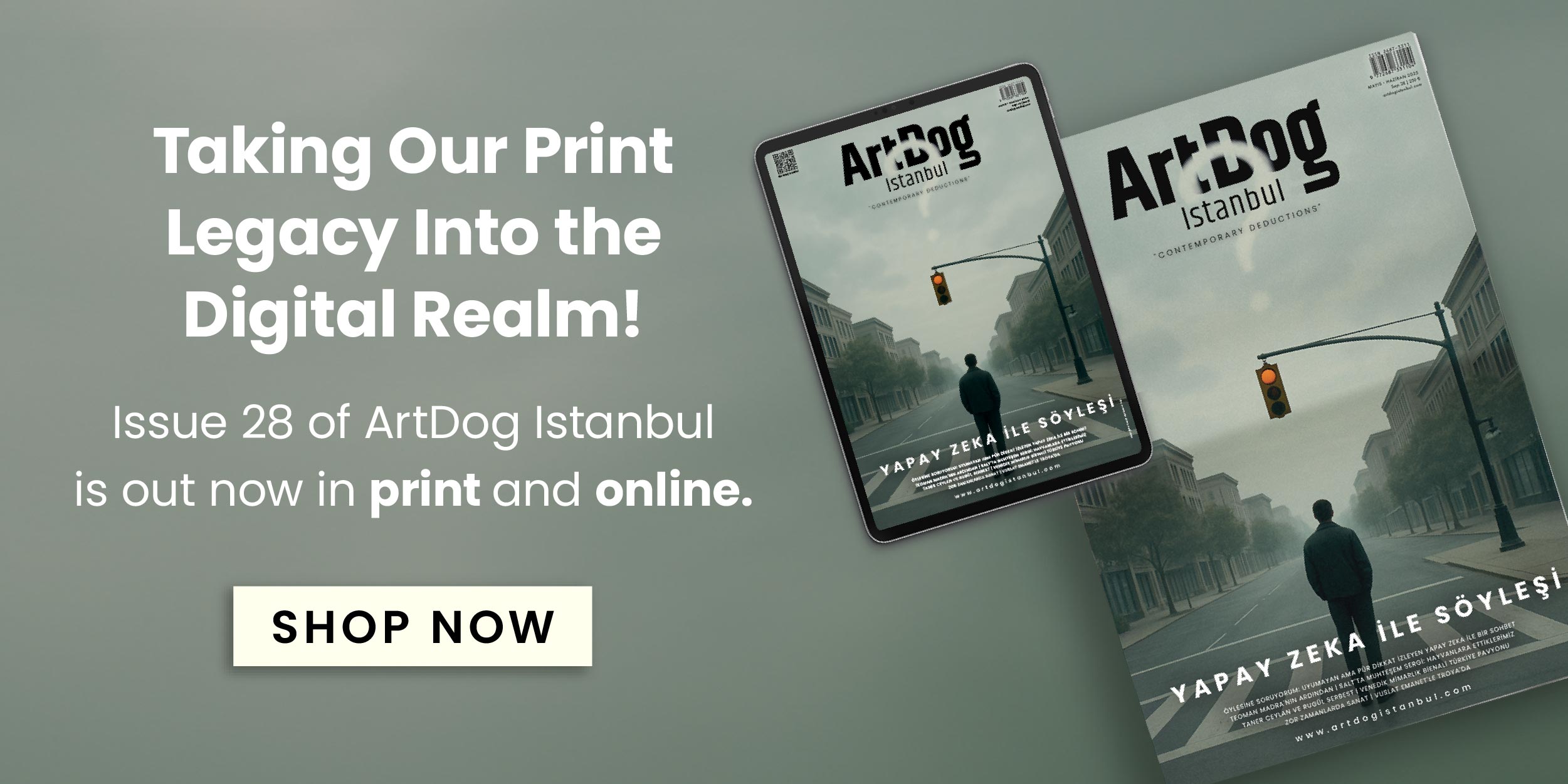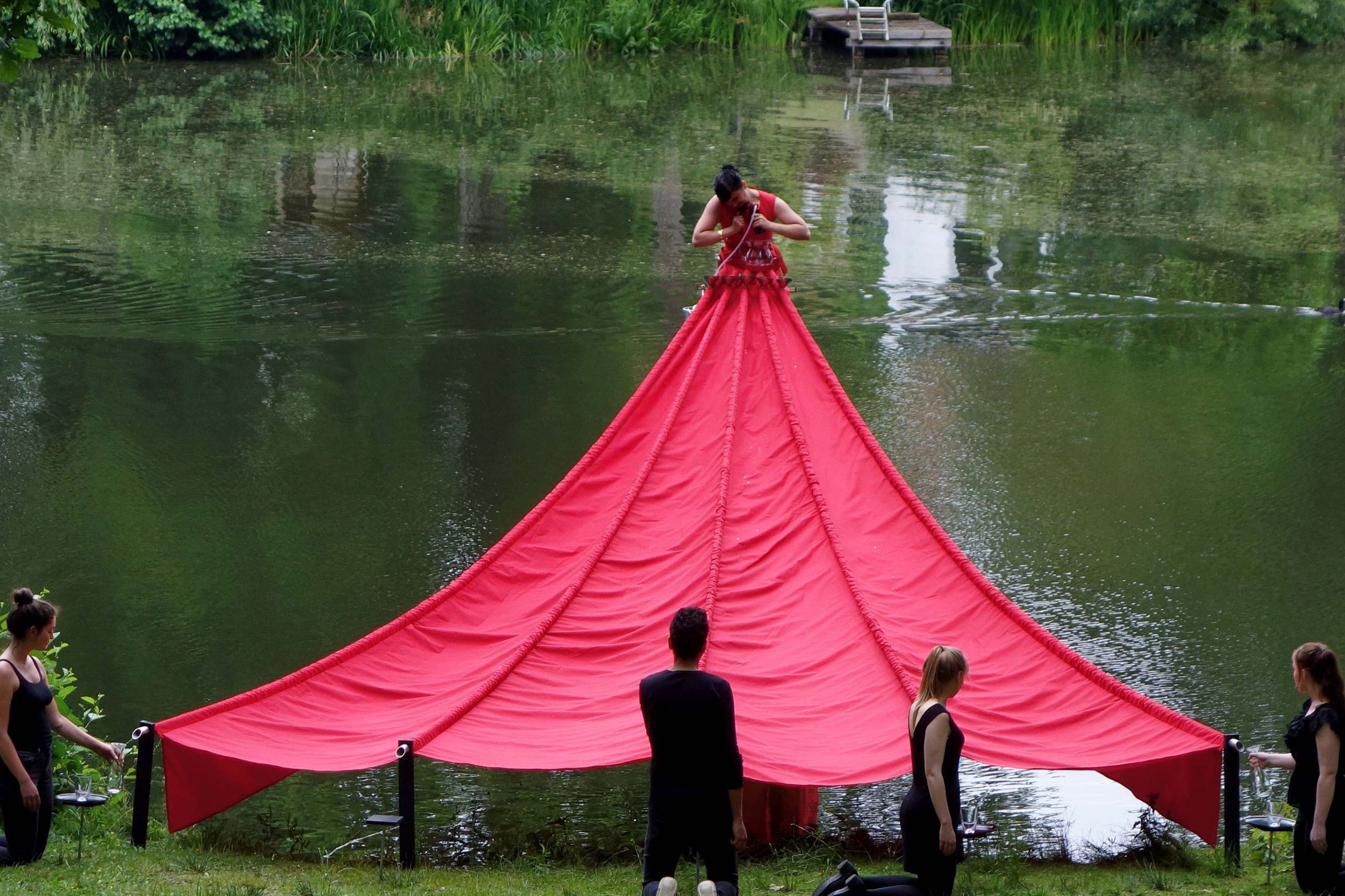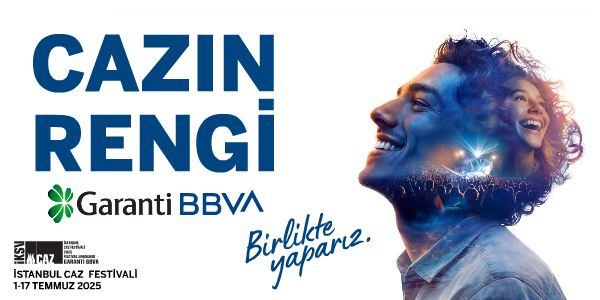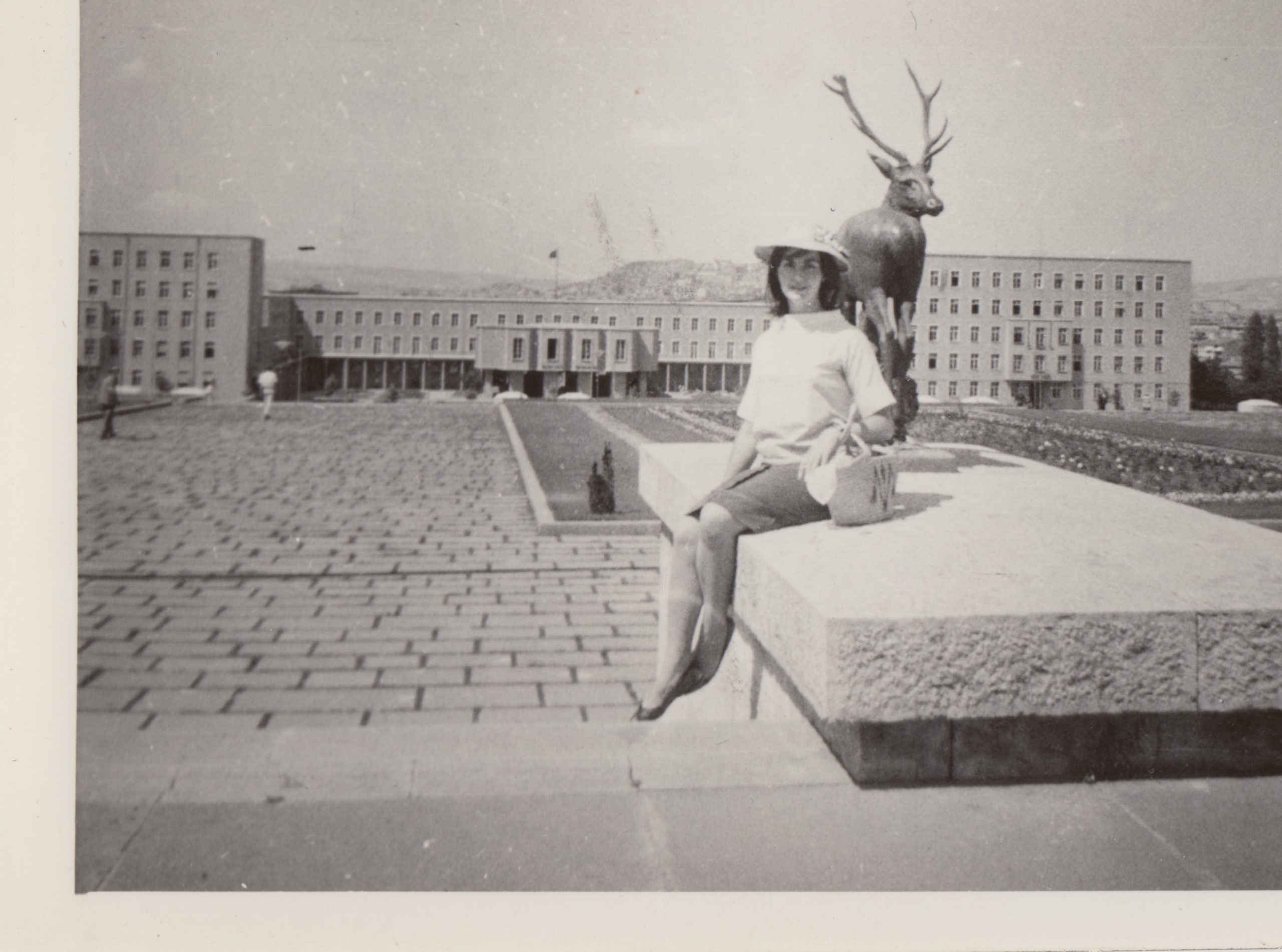Nezaket Ekici is the name to know when it comes to performance art in Turkey, a relatively obscure history of the internationalist form that is arguably just coming of age in the context of Flux, a new Marina Abramovic retrospective, including her method, with a live performance program at Sakip Sabanci Museum in Istanbul.
In addition to the 12 Turkish artists who entered the open call to perform at Flux, Ekici received a special invitation, along with 4 international performance artists, to join the programming curated by Paula Garcia and Serge Le Borgne.
For 10 days, 8 hours per day, Ekici performed, “Work in Progress – Personal Map” (2008 – ongoing), a microcosmic retrospective of her 20-year career, in which she performed over 250 performances in more than 170 cities in 60 countries on 4 continents. A durational performance artist who studied under Abramovic in Germany, Ekici is originally from the Central Anatolian city of Kırşehir, though resides in Germany.
Her next show is at the Municipal Gallery in Nordhorn, Germany with Shahar Marcus at Städtische Galerie Nordhorn, and it runs till May 10, 2020. She will give a talk at Sabanci University in March with art theorist Dr. Ahu Antmen.
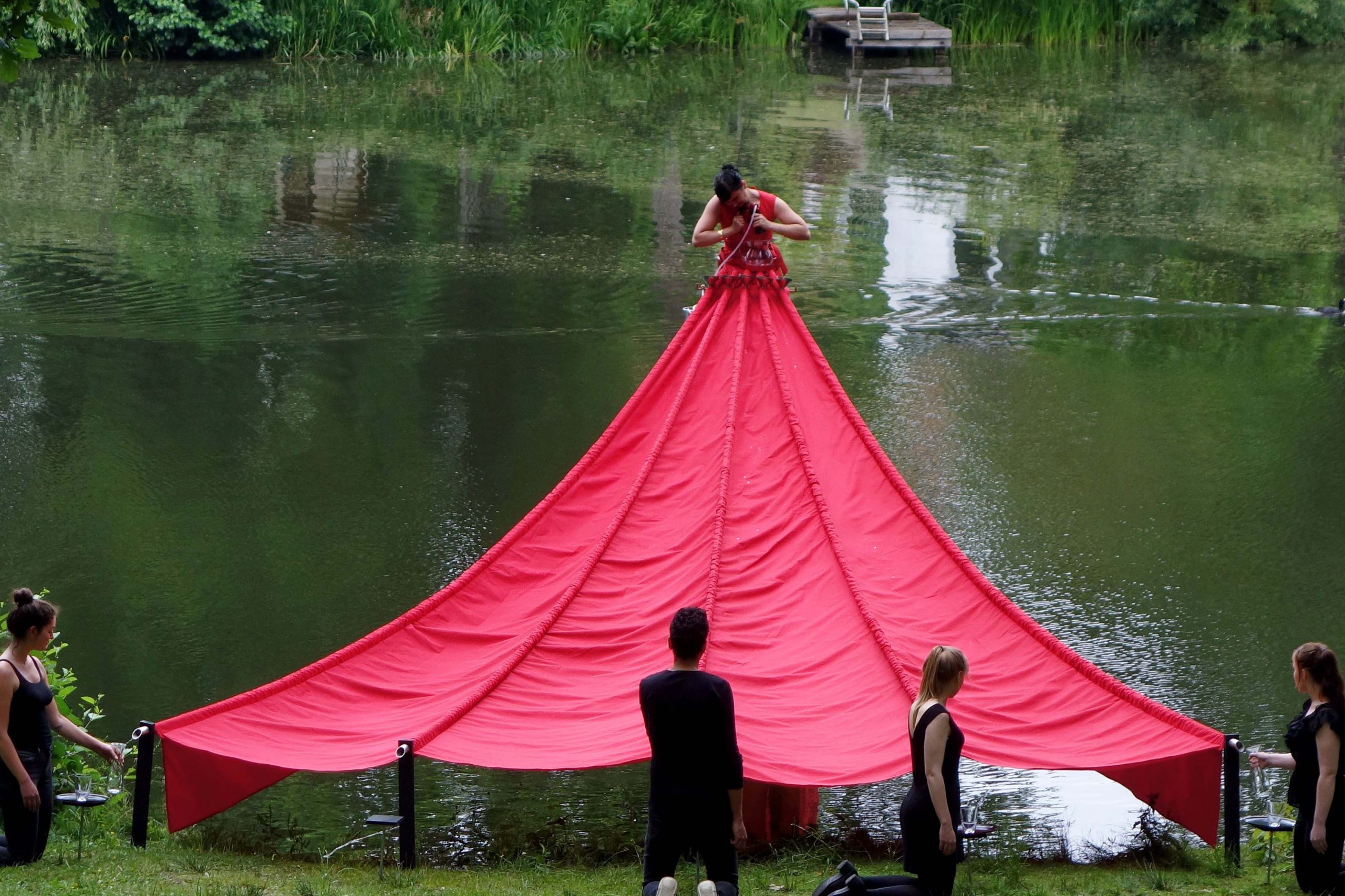
Matt Hanson
I’m so curious about your student years, and why you chose the path that you chose. Why, or how did you decide to become a performance artist?
Nezaket Ekici
Before performance, I studied painting, sculpture and art pedagogy in Munich [Academy of Fine Arts in Munich (AdBK), and Ludwig Maximillian University]. My interests in performance, we can not say performance, but to move the body, was at 16, or 17, when I went to the disco. I felt really free, and had no fear in front of the public. I was courageous. I danced how I liked, and I danced.
This is the start, to have the courage. I felt good with the body, the expression. In sculpture and painting I expressed myself, but I felt I was missing something, the body. The medium is the body. I can express myself better. At that time I began to make some performances with sculpture. I studied sculpture and used the body. This is the beginning. I had no teacher in performance art at that time.
That was in 1994, till 2000, I studied sculpture, painting and art pedagogy, but [while] doing performances already myself. Nobody was helping me, no teacher at university. But then I heard that Abramovic was teaching in Hamburg first, and then I went to her. But she was a guest professor at that time. I presented myself, and she liked very much, but she said she can not take me, she’s a guest professor. I went back with this in my heart.
I heard that she was an ordinary professor in Braunschweig, and then I tried after seven years, waiting, and then I applied at Braunschweigand she took me immediately. You know why? Because [for] seven years it was my dream, in my heart. I did many, many performances myself, and she saw how much potential, interest and curiosity and she took me immediately. This was the starting point.
That four years in Braunschweig[at the Braunschweig University of Art], I studied not performing arts, [but] performance art. I learned from Marina Abramovic that performance art comes from fine arts, not theater, not music, from fine arts. Read her text. Marina told us if you cut a potato at home and you cut your hand, you feel pain and cry. But if you cut the potato in front of the public and cut your hand, but do not cry, you accept the pain. I don’t use ketchup like in the theater, this is fake. It needs to be real.
MH
At that time, when you were beginning, what types of performance art were you absorbing? What types of performance art were you seeing? Were you also active at all then in Turkey?
NE
In Turkey, at that time, no. In the 1990s, Şükran Moral maybe. I did not know Şükran at that time personally. I heard and read about her works, and saw some videos. I knew also about the works of another artist Nil Yalter, who did some performance from the 70s.
Be honest. Performance art only began to flourish in real terms in recent years in Turkey. It is new, new, new. But you can not compare to the [performance art] history of Germany, to Spain, to Poland, to other countries with 60, 70, 80 years of performance art. You can not compare.
I like that Turkey is working on that, and that’s a good thing because it needs to come there. But it’s really in the beginning. They have no history. It really needs time. And, can you imagine, Germany has a big, heavy story on the history of performance art, even Poland, even Spain, like the same age of Marina Abramovic, the grand dame of performance art in Spain, do you know who that is? Esther Ferrer. She’s an 83-year old woman, the grand dame of performance in Spain. She’s still doing performances. Amazing woman.
You see how much story it has? That’s a long, big history. You know what I mean? Turkey is in the beginning. I came in 2005, my first time to Istanbul. I had a residency from Berlin Culture Center. Beryl Madra invited me. I had a six month residency [at the Contemporary Art Center Istanbul], in Teşvikiye. She brought me to Turkey, the grand dame curator of contemporary art. She told me I will become one of the leading performance artists in Turkey.
There was not really performance art [in Turkey]. So, I made some performances at that time in Istanbul. It was not easy to do performance, because you need permissions. It was really new. I came back [to Istanbul] in 2013-14 for another residency [at the Culture Academy Villa Tarabya] from the German government, and I stayed 10 months there. Even there, there was not much. It’s growing up. It’s now, only some years [since performance art really began in Turkey].

MH
Do you think of your contribution to Flux as somehow in dialogue with the early history of performance art in Turkey? Is this show to be a part of this early history? Are you setting a tone for the future of performance art in Turkey?
NE
Flux is very important and they did an amazing job I think. There was performance [in Turkey], and I’ve done performances [in Turkey], but as a big, big show, I’ve had no big show presenting all of my performances. I hadn’t had the chance yet. There’s something now that’s happening and it’s very important to give the audiences the chance to see performance art, and the history of performance art.
This is Marina Abramovic. This is so important for Turkey. The live performances is great, that audiences have the chance to see it for three months. The performers come everyday for 8 hours to perform. I found it very interesting how the Marina Abramovic Institute chose people. The four international, [and] invited, and then the open call, and 12 Turkish artists.
I asked Paula [Garcia] who the artists were, and then I see that from fine arts, maybe two, three, four people. The rest are from music, theater, dance. I say, “Oh, interesting”. The original background for Abramovic was that performance art comes from fine art. Marina changed also, everything changed, it’s interdisciplinary of course. I make also, interdisciplinary works, I use spotlights. Sometimes it looks theatrical. But, it’s performance. I use the stage, I use light, but it’s still performance, not theater.
But these people [who are also performing] are originally from acting, music, dance. But now, they are performance artists, or doing performance art. I found it very interesting. They make performances, of course, but why [did] the name change? I’m interested in that. Why are they now performance artists? If we look in the history of performance art, from Dada, of course there were other elements, but it was always from fine art.
You know the story, in the 1960s, even in the 1920s, from Dada. It’s really growing up from the fine arts. What I found interesting, was why today an actor says, “I’m a performance artist”, why a musician says, “I’m a performance artist”, why a dancer says, “I’m a performance artist”, why we changed the profession now. Why are we looking for a word, a title, that is not named performance art, but something else. It has a name already. It has a history.
Why are we not open-minded [enough] to look for a new name [for performance art] that makes this interdisciplinary [approach] with a new name. It would be much better.
I would be happy if an actor says, “I’m an actor, but I’m working in performance art. I do performances. But my profession is acting.” [Or,] “I’m a musician. I do performances. I do performance art, but my background is a musician. It’s clearer. Even I come from fine arts, but I studied performance art. I have the right to say, “I’m a performance artist.” I studied performance art.
I know, it’s a real fashion now, everywhere performance artists, everywhere. Even if you make two performances, you are a performance artist. Amazing, great. It’s not fair to the people who worked 20, 30, 50 years [in performance art], who a background [in performance art]. What is performance art really?
I never said during my studies, “I’m a performance artist.” I said, “I’m studying performance art.” It needs so much development, experience, knowledge. You need to go in the world, and get in contact with the public, with culture, with spaces, mentalities, to understand how is the body in different places and with different audiences. I think this needs experience, and many years of experience to grow up and come to a station.
I’m still always growing up. I want to learn more. For this, I need so much experience. I need to go. I need to go around the world to have this experience.
I can say to the new Turkish performance artists, please stay not in Turkey, say you are not a performance artist from the beginning, make many, many works, work on you, try and see different locations, to form in different locations, understand the public, get more courage, and go in the international context to see, to understand.
MH
Is that why you chose to perform, “Work in Progress – Personal Map” for Flux?
NE
Yes, I think it was so important. Anyway, I did, in a retrospective, in an oral way. Marina did it in a visual way. I did it in a language way. With more than 250 different performances in 60 countries, in 170 cities, in 4 continents, can you imagine how much impact that is? I found it’s interesting that MAI was interested in this. I proposed two different pieces. I was also happy with this. The other [piece I proposed] was absolutely new, I never did it.
But even this, “Personal Map” in this context, was absolutely new, because it was 10 days, 8 hours [a day]. Normally, I did it [for] 2 days maximum, like for 6 hours. Or, I did it one day 12 hours, but never 10 days, [for] 8 hours. And, in my bad Turkish language, in Turkey, I tried to speak 90% Turkish. It was also new for me. It was absolutely new for me.
Many things, Matt, I said, “How can I do ten days? I have experience with 2 days, but how can I manage 10 days.” But it was so easy, because it was interactive. People came, asked [questions], helped me. I made so many fragments of my interactions, and at the end, I was not finished. Can you imagine? I could do one month. Time was running. And I sometimes said, “Oh, my god.”
The last day [of my performance], it was 5 minutes to 8 [o’clock], and I asked, “What’s the time?” There were many people in the space, and I said, “Sorry, what’s the time now?” And the guard said, “It’s five to eight.” I said, “What?” You can not control sometimes, because the body and mind are not choreographed, it’s improvised sometimes.
I know my setting is a concept, but between there’s so much improvisation. It’s so much dealing with the space and the audience.

